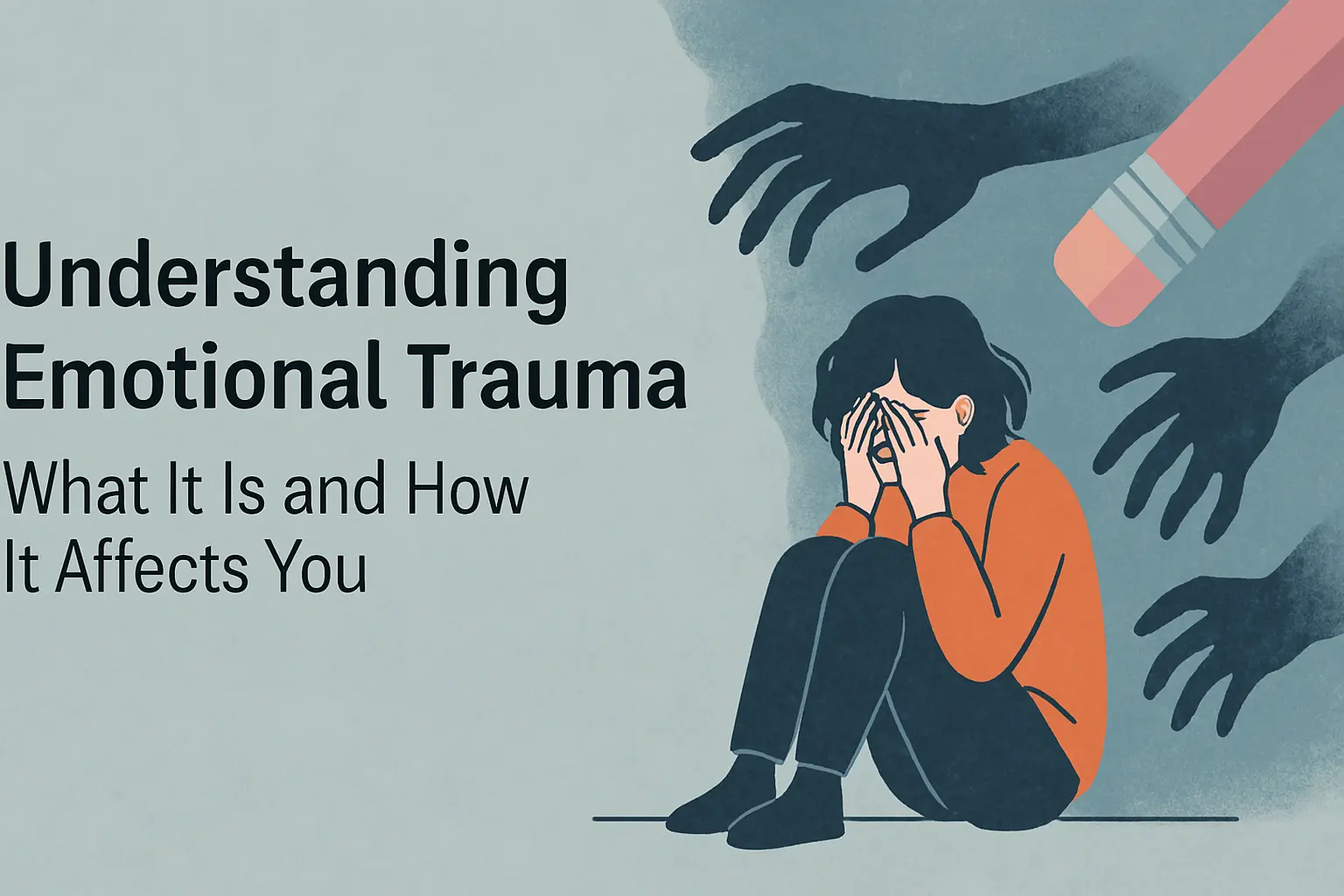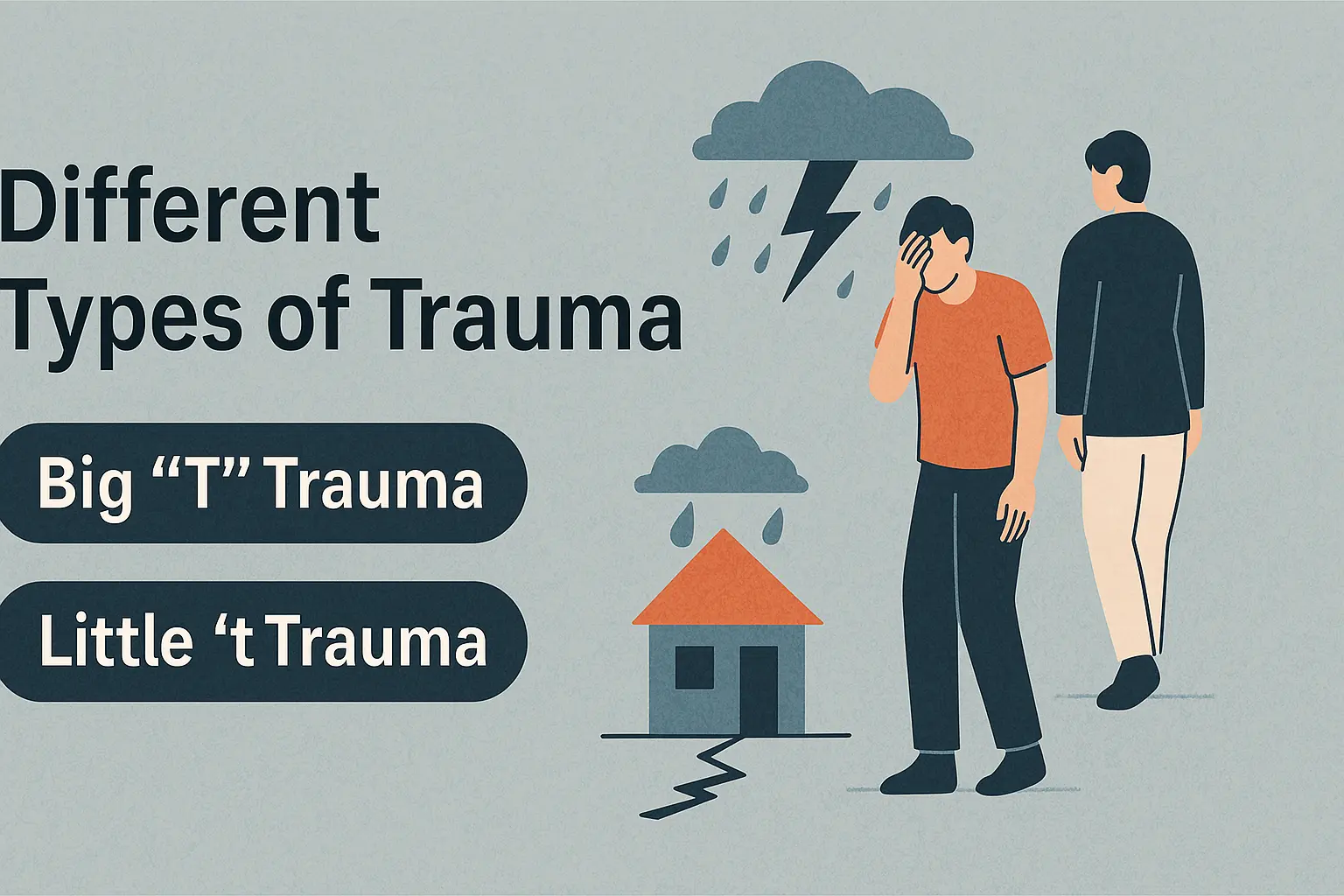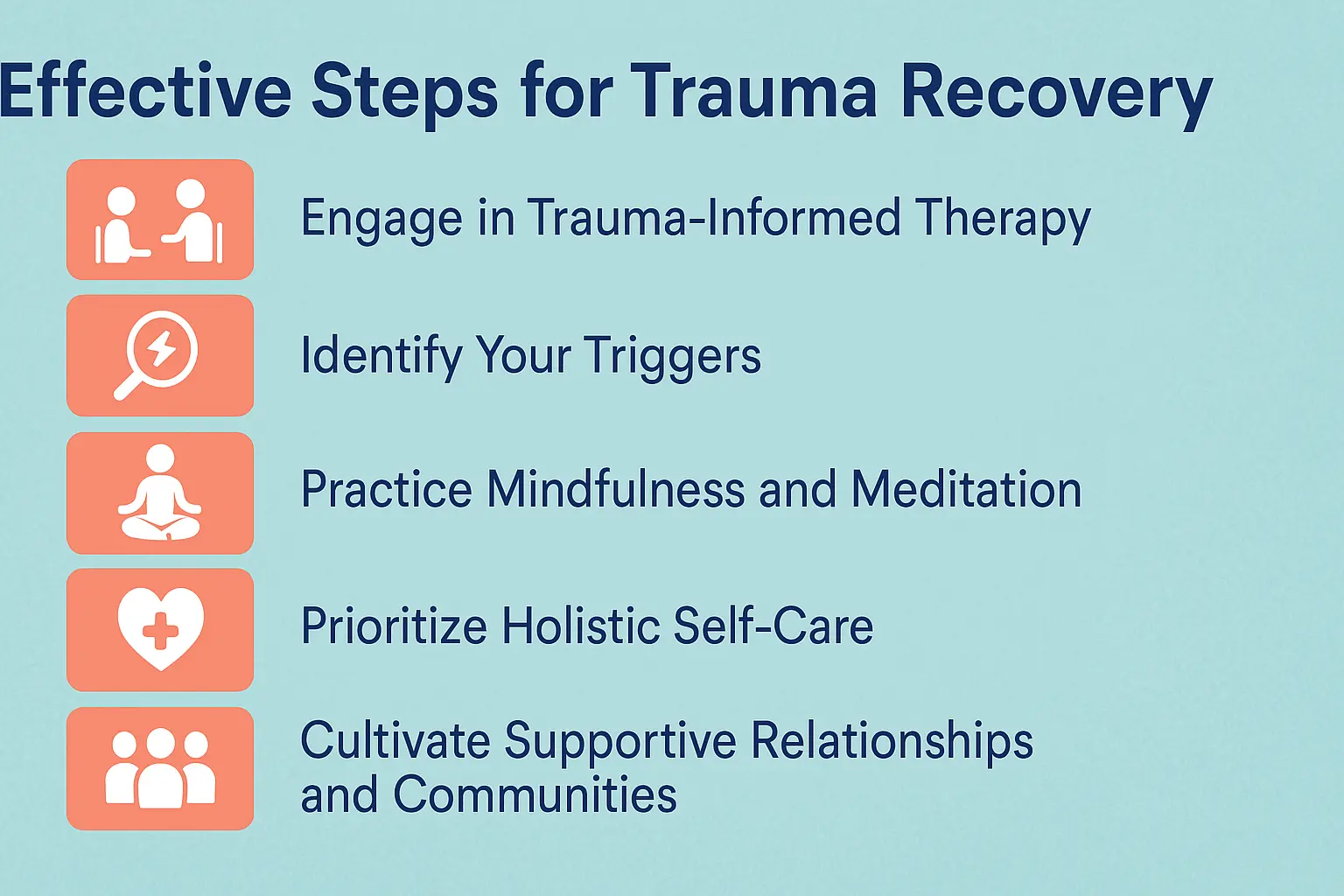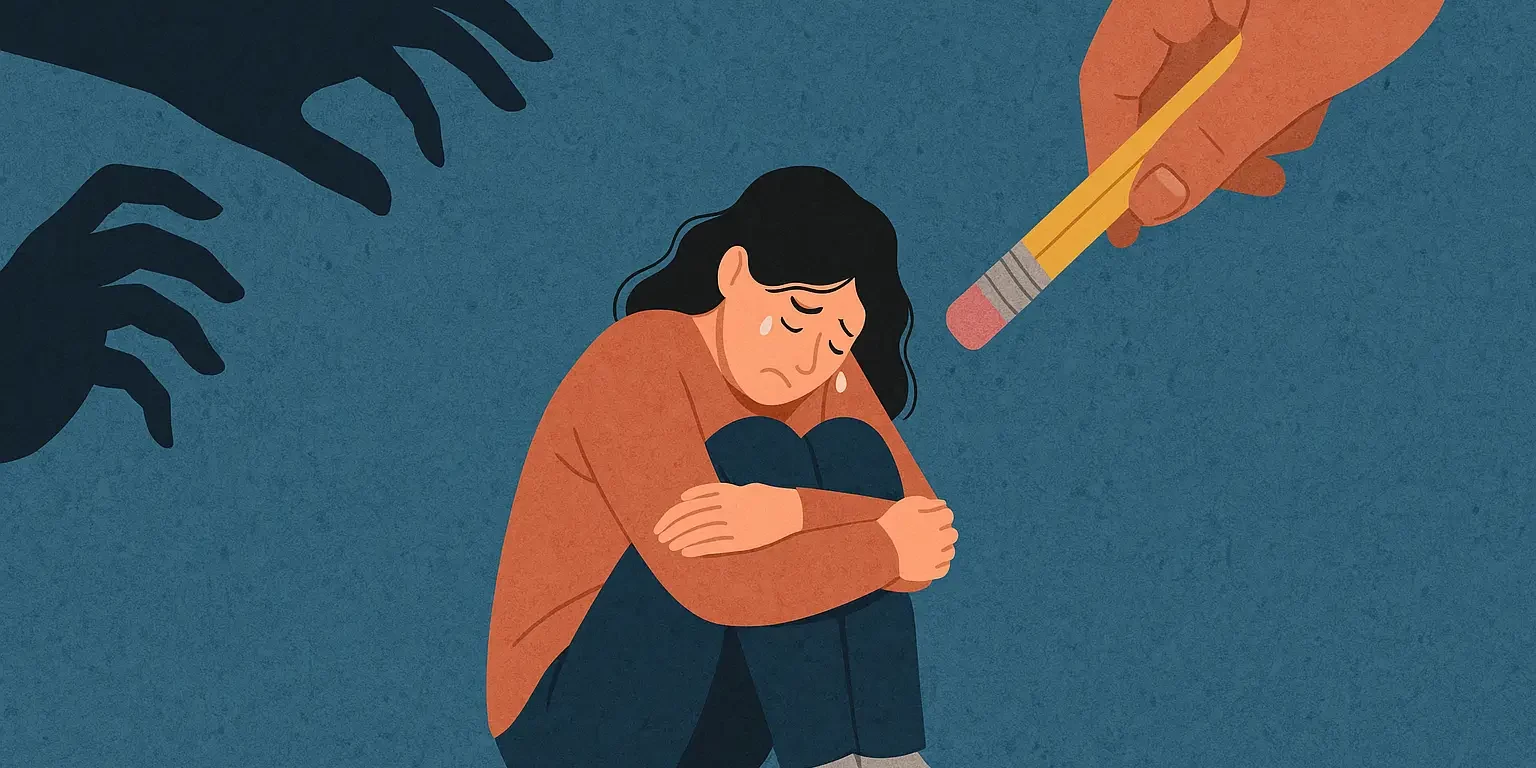Healing from trauma is not just about surviving it is about reclaiming your life and thriving again. Whether you are facing overwhelming memories or struggling with daily triggers, you are not alone, and recovery is entirely within your reach. In this engaging and informative guide, we will dive deep into what trauma really is, how it impacts your life, and provide clear, evidence-based strategies that empower you to start your healing journey today.
Discover practical ways to regain emotional strength, rebuild your sense of self, and transform your pain into resilience and hope.
Understanding Emotional Trauma: What It Is and How It Affects You

Emotional trauma happens when you experience highly distressing events that overwhelm your ability to cope, leaving lasting emotional and psychological scars. These events can include experiences like physical or emotional abuse, severe accidents, natural disasters, or the sudden loss of a loved one. Trauma is not just about the event itself but how deeply it impacts you and your ability to move forward.
When trauma occurs, your emotional system can become dysregulated, leading to ongoing feelings of anxiety, fear, or helplessness that persist long after the event has ended. The American Psychological Association (APA) emphasizes that trauma is not just a short-lived emotional reaction; it is an intense emotional response that can disrupt your everyday life, relationships, and overall sense of well-being for months or even years.
How Does Trauma Affect Your Brain?
Your brain undergoes significant changes after experiencing trauma, primarily in two key areas:
- The Amygdala (Your Fear Center): Imagine the amygdala as your internal alarm system, designed to warn you of danger. After experiencing trauma, this alarm system becomes overly sensitive, continuously scanning for potential threats; even when there is no real danger present. This heightened state of alertness can cause chronic anxiety, hypervigilance, and frequent panic attacks, making it challenging to relax or feel safe.
- The Hippocampus (Your Memory Manager): The hippocampus is responsible for organizing your memories and helping you understand the context of your experiences. When trauma occurs, the hippocampus can become impaired, leading to confusion between past traumatic events and present-day reality. This confusion often results in vivid flashbacks, intrusive memories, and nightmares, causing you to feel as if you’re reliving the traumatic event repeatedly.
Understanding these brain changes can help you realize why recovery from trauma is not simply about “getting over it,” but rather about retraining your brain and emotional responses through specialized therapeutic approaches.
Different Types of Trauma: Exploring the Impact

Trauma is not a one-size-fits-all experience. It can take many forms, each deeply affecting people in different ways. The way an event affects someone depends on a variety of factors, including their history, personality, and current support system. Mental health professionals often distinguish trauma into two broad categories: “Big T” and “Little t” trauma. Both are valid and both can be debilitating.
Big “T” Trauma
Big “T” trauma refers to major, life-threatening or severely distressing events that are typically recognizable as traumatic by almost anyone. These situations often involve a perceived or actual threat to life or physical safety, and they tend to cause overwhelming emotional reactions.
Examples include:
- Natural disasters: Hurricanes, earthquakes, floods, or wildfires can lead to a sudden loss of home, safety, or loved ones, triggering immense psychological distress.
- Violent crimes or severe accidents: Events such as shootings, muggings, domestic violence, or serious car accidents often result in PTSD and other long-term mental health conditions.
- Military combat: Exposure to warzones and high-stress environments often leaves soldiers and veterans with symptoms of PTSD, depression, anxiety, and difficulty reintegrating into civilian life.
- Sexual assault or physical abuse: These intensely personal violations of safety and trust often cause lasting damage, including shame, anxiety, hypervigilance, and relationship issues.
According to the National Center for PTSD, around 7-8% of the U.S. population will experience PTSD at some point in their lives, and women are twice as likely as men to develop it. These traumatic experiences are often at the root of chronic mental health issues.
Little “t” Trauma
Little “t” trauma refers to events that may not be life-threatening but still feel deeply distressing or emotionally overwhelming. These types of experiences are often minimized by others, but they can be just as impactful especially when they occur repeatedly or remain unresolved.
Examples include:
- Relationship breakups or divorce: These experiences can lead to grief, abandonment issues, and disruptions to emotional stability.
- Job loss or financial struggles: Loss of financial security can trigger feelings of failure, anxiety, and hopelessness.
- Emotional neglect or verbal abuse: Especially when experienced over time, these can damage self-esteem, trust, and emotional resilience.
- Loss of a pet or relocation: These types of change and loss, while sometimes dismissed by others, can disrupt your sense of security and routine.
Research shows that repeated exposure to these types of distressing events, especially during childhood; can lead to the development of Complex PTSD (C-PTSD), depression, anxiety disorders, and chronic stress. Studies published in the journal Psychiatry Research and by the CDC’s Adverse Childhood Experiences (ACEs) study confirm that emotional and relational traumas are significant predictors of long-term health issues.
Importantly, trauma is subjective. What feels traumatic to one person may not impact another the same way. Rather than comparing experiences, it’s more helpful to validate your own pain and seek the support needed for healing.
If any of these forms of trauma resonate with you, you’re not alone. for personalized, compassionate care.
Effective Steps for Trauma Recovery: Proven and Practical

Healing from trauma requires structured, intentional actions that are supported by scientific research and expert recommendations. Here’s a comprehensive step-by-step approach to guide you through recovery:
Step 1: Engage in Trauma-Informed Therapy
Trauma-informed therapy provides a safe, supportive environment tailored to your specific experiences. Proven methods include:
- Eye Movement Desensitization and Reprocessing (EMDR): Helps safely process and reduce distress from traumatic memories by stimulating bilateral brain activity.
- Cognitive Behavioral Therapy (CBT): Identifies and transforms harmful thought patterns related to trauma, promoting healthier coping strategies.
Ready to start your therapy journey?
Step 2: Identify Your Triggers
Identifying triggers situations, sounds, or people that evoke traumatic memories; is crucial for managing your trauma responses effectively. Strategies include:
- Keeping a journal to track emotional responses and identify patterns.
- Working with a therapist to develop personalized coping techniques for handling triggers.
Step 3: Practice Mindfulness and Meditation
Mindfulness practices and meditation have scientifically proven benefits for trauma recovery, including reducing symptoms of PTSD and anxiety:
- Start with guided meditation apps or videos that help you gently focus your attention and build emotional resilience.
- Incorporate mindfulness exercises like deep breathing and grounding techniques to help manage anxiety in daily situations.
Step 4: Prioritize Holistic Self-Care
Taking care of your overall well-being is essential for trauma recovery. Research-backed holistic self-care practices include:
- Regular Exercise: Activities like walking, yoga, or swimming significantly reduce stress, improve mood, and promote better sleep.
- Creative Activities: Engaging in art, writing, or music provides therapeutic outlets for processing and expressing emotions safely.
- Healthy Lifestyle: Ensuring good nutrition, sufficient sleep, and hydration is foundational for emotional resilience and recovery.
Step 5: Cultivate Supportive Relationships and Communities
Social support is critical to healing. Proven approaches to building supportive networks include:
- Joining trauma recovery support groups or community forums where you can share your experiences and receive validation.
- Strengthening connections with trusted friends or family members who can offer understanding, empathy, and practical support during difficult times.
By systematically engaging in these steps, you empower yourself with proven strategies to effectively address and overcome the challenges of trauma, paving the way for emotional healing and sustained wellness. However, while these steps are helpful, navigating trauma alone can be difficult and even overwhelming. That’s why it’s essential to work with a trauma specialist who can tailor treatment to your specific needs and guide you safely through the healing process. A trained professional can help uncover root issues, manage complex symptoms, and support long-term growth.
Common Questions About Emotional Recovery
How can exposure to traumatic events or images ( such as from disasters or news) affect me even if i wasn't directly involved?
Absolutely. Even if you haven’t personally experienced a disaster or violent event, simply witnessing graphic images or hearing distressing news reports, whether on your social media feed, news alerts, or conversations, can have a profound impact on your emotional well-being. The human brain is wired for empathy, and repeated exposure to traumatic stories or visuals can activate your stress response almost as if you experienced the event firsthand.
This kind of indirect exposure can cause what’s known as vicarious trauma or secondary traumatic stress. You might notice symptoms like heightened anxiety, trouble sleeping, or feeling constantly on edge after seeing footage from a natural disaster, terrorist attack, or other traumatic events. Your nervous system may become overwhelmed, making you more sensitive to everyday stressors and potentially triggering memories of your own challenging experiences.
The takeaway? Trauma is not limited to direct participants. In today’s interconnected world, the constant stream of distressing news can leave a lasting mark, making self-care, boundaries with media consumption, and reaching out for support all the more vital.
What sleep habits can improve recovery from trauma?
Quality sleep plays a vital role in your ability to heal from trauma. To support your recovery, consider adopting these research-backed sleep practices:
- Stick to a Consistent Sleep Schedule: Aim to go to bed and wake up at the same times each day, even on weekends, to help regulate your body’s internal clock.
- Prioritize Restful Sleep: Most adults need 7 to 9 hours of sleep each night for optimal emotional balance.
- Create a Relaxing Bedtime Routine: Wind down with calming activities such as light reading, gentle music, or deep-breathing exercises.
- Optimize Your Sleep Environment: Keep your bedroom cool, quiet, and dark to make falling and staying asleep easier.
- Limit Screen Time Before Bed: Avoid devices like phones and TVs at least an hour before bedtime, as blue light can disrupt your natural sleep patterns.
Focusing on restorative sleep can make it easier to manage trauma symptoms, improving mood and resilience as you continue your healing journey.
How can sensory input help in relieving stress and calming trauma-related anxiety?
Engaging your senses can be a powerful and immediate way to soothe stress and interrupt trauma-related anxiety. Your brain often responds quickly to sensory experiences, helping to ground you in the present and ease emotional overwhelm.
Consider these approaches:
- Soothing Sounds: Listening to calming music, gentle rain sounds, or nature recordings can help shift your mood and promote relaxation.
- Comforting Scents: Aromatherapy with essential oils like lavender or chamomile can quickly reduce stress levels and help you feel anchored.
- Touch and Texture: Holding a soft blanket, cuddling with a pet, or pressing a comforting object in your hand can bring a sense of security and calm.
- Visual Anchors: Focusing on familiar, calming visuals, a favorite photograph, a peaceful landscape, or even flickering candlelight, can help redirect anxious thoughts.
- Taste and Temperature: Sipping a warm cup of herbal tea or enjoying a familiar, comforting snack can offer reassurance and a gentle return to the present.
Everyone’s sensory preferences are unique. Take some time to experiment with different options and discover what works best for you; these small but intentional choices can make a significant difference in managing stress and trauma responses.
What are the physical effects of trauma?
Trauma doesn’t just leave its mark on your emotions; it can show up throughout your whole body. When you’ve experienced a distressing event, your body’s stress response can remain on high alert long after the danger has passed. This state of heightened arousal can contribute to persistent tension, headaches, and even chronic health issues like high blood pressure or a weakened immune system.
You might notice changes in your sleep patterns, such as trouble falling asleep, frequent waking, or restless nights. Lack of quality sleep can lead to constant fatigue, making daily tasks feel much harder than before. Appetite can also change; some people eat much less than usual, while others may find themselves eating for comfort.
Sometimes, coping with physical discomfort or emotional pain can lead to unhealthy habits, such as excessive drinking, smoking, or substance use. While these might seem like quick fixes to numb distress, they often create new health challenges over time.
Your body is deeply connected to your mind, so it’s not uncommon for trauma to emerge as aches, pains, or unexplained medical symptoms. As you work through your recovery, recognizing these physical effects is a crucial step in healing both your body and your mind.
Conclusion: Embark on Your Healing Journey
Trauma recovery is a deeply personal process that takes time, patience, and consistent effort. By engaging with therapy, identifying triggers, practicing mindfulness, prioritizing self-care, and building a supportive community, you can gradually reclaim your life and achieve lasting emotional wellness.
If you or someone you care about is struggling with trauma, to begin your journey toward healing and recovery.
References:
- American Psychological Association (APA, 2020)
- van der Kolk, B. (2015). The Body Keeps the Score
- Shapiro, F. (2018). EMDR Therapy
- Malchiodi, C.A. (2020). Handbook of Art Therapy
- SAMHSA (2022). Trauma and Violence
- NIMH (2023). Complex PTSD
- Harvard Health (2022). Importance of Sleep and Nutrition
- Mayo Clinic (2022). Exercise and Stress Management
- National Center for PTSD (2023)
- CDC. Adverse Childhood Experiences (ACEs) Study
- Psychiatry Research Journal (2020)








